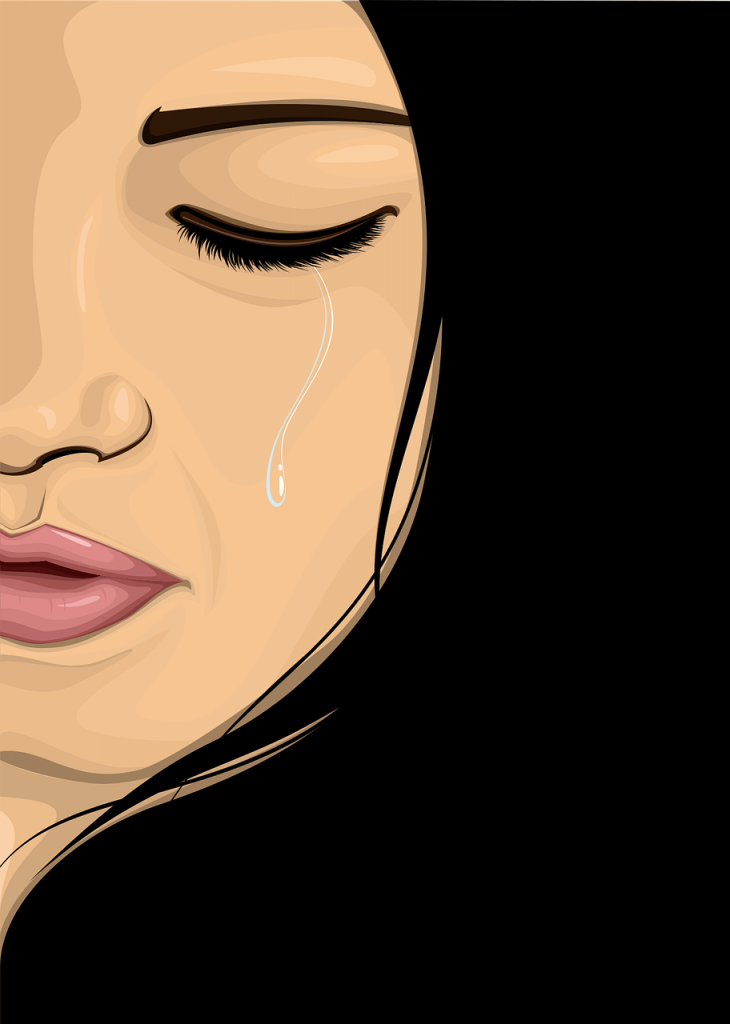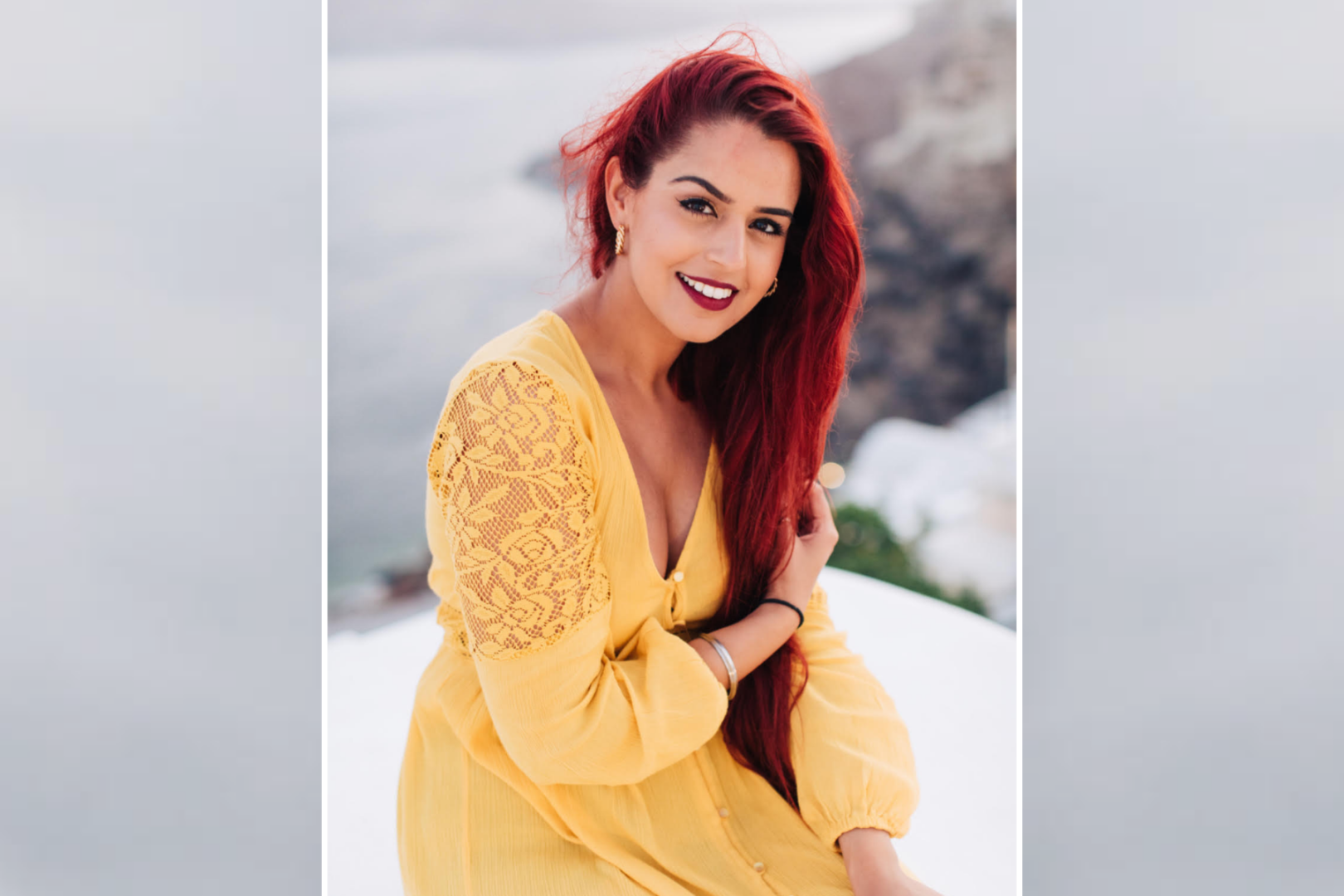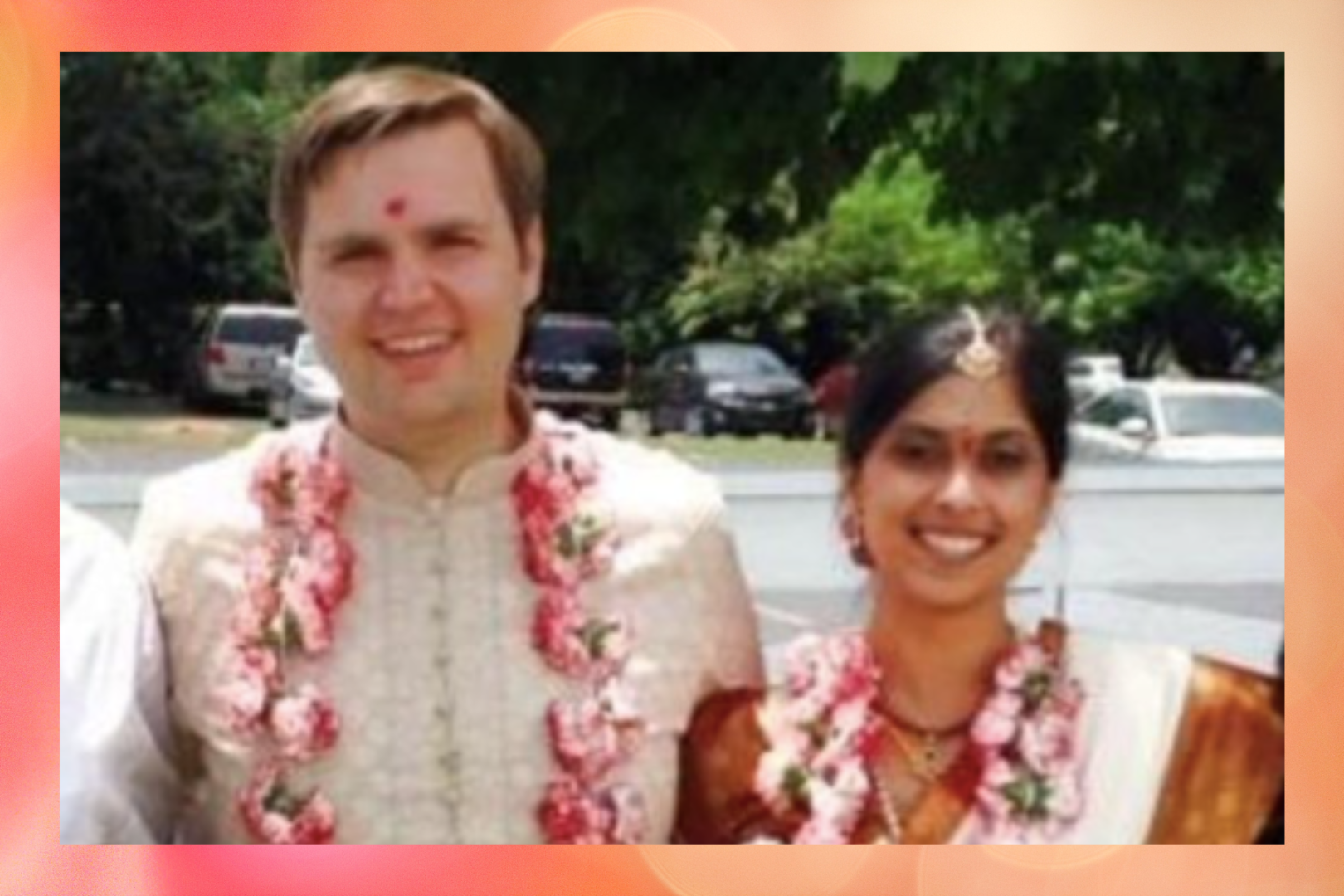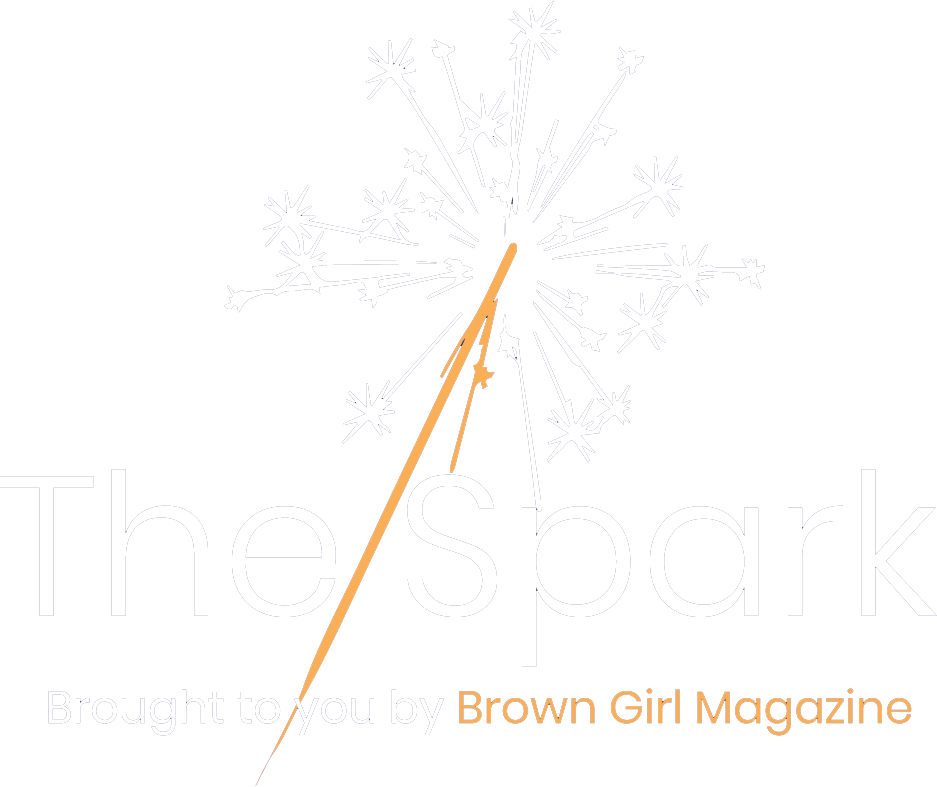
by Meera Ram – Follow @Browngirlmag
“It looks fine! Don’t worry, it’ll grow back.”
That’s what a friend said to me when I got a bad haircut. But not for me. It does not “grow back.” Instead, my hair thins and eventually falls out. I just turned to my friend, nervously laughed, and said,
“Yeah, I guess you’re right.”
When I was 16, I noticed a small part of my scalp was visible. Thankfully, I was blessed with stereotypical thick, curly, and unruly South Indian hair, making it easy to cover up. For the rest of high school, I kept my hair above my shoulders so the curl would have enough “bounce” to hide any balding spots.
However, my hair loss increased exponentially in college. I planned my week around when I would have to wash my hair. Afterwards, I would spend up to two hours of air-drying, blow-drying, adding loads of product to get the perfect amount of bounce with the least amount of frizz, and of course, making sure all my bald spots were covered. But even with all that prep, there would be days where I would cancel plans because I was having a “bad hair day” and would not let anyone see me.
Hair loss after puberty is often a symptom of hyperthyroidism, which is caused by an overactive thyroid, leading to additional symptoms such as rapid weight loss and anxiety. One summer, I went to a doctor to do a test for hyperthyroidism. I prayed my thyroid levels were high because that meant a solution such as pills or surgery. Unfortunately, the tests came back negative.
[Read More: In-Patient Treatment: My Journey to Finding Stability and Learning to Ask For Help]
The doctor attributed my hair loss to hormonal and genetic factors and suggested Rogaine and birth control so it would slow down the process. However, as a 19-year-old still adjusting to boy drama and homesickness, Rogaine and taking a daily pill did not fit into my college life. And the hair loss continued.
Approximately 40 percent of women have visible hair loss. But, while it is widely accepted amongst men, female hair loss is rarely discussed. Standards of beauty across the globe elevate women with thick, luscious locks. From Shakespearean sonnets to “Becky with the good hair,” hair is a defining and universal symbol of beauty, culture, femininity, and fertility. As someone who wished to be viewed as beautiful and feminine, it was heartbreaking when I saw this prominent symbol disappearing.
The summer after my second year of college, my sister found a salon in Tampa that designs wigs for women in this situation. I drove with my mom and sister to meet with the owner. After examining my scalp, she took a step back and said,
“I’m sorry to tell you this, but you may be bald by the time you’re 30.”
Bald?! By 30?! But I’m a girl!
Tears ran down my face as a million thoughts ran through my mind.
I was 20 years old. People would judge me. My hair was part of my personality. How would anyone fall in love with me? The owner comforted the three of us and said that she will be there when that time comes. Meanwhile, she offered a temporary solution call Xfusion. This little bottle filled with keratin black-colored powder became my life. Shaking this powder on my scalp every morning became second nature as brushing my teeth, showering, and putting on makeup. I also started taking birth control regularly and using Rogaine on a daily basis—my ability for denial had finally shattered.
While this little bottle became my savior, I know it was not the solution. I have accepted that I will be bald. But that does not mean the pain is gone. I am still self-conscious if the wind blows from behind or if my hair looks stringy. When friends discuss dating options and dismiss men who are balding, I cringe. How can I tell them I suffer from the same situation I just heard them mock? Most people would never go on a first date with someone who is balding because that’s just gross, right? Think how many times you have swiped left because his hairline was receding.
In my final year of college, I started dating someone and, initially, my self-consciousness skyrocketed. I spent hours fixing my hair before he came to pick me up on a date.
Would he notice the bald spots? If he did, would he find me unattractive and end this new relationship?
One day, he was over and while I was getting ready, I instinctively grabbed my Xfusion and shook it on my head. He noticed and asked what I was doing. It was now or never—I took a deep breath and calmly said,
“Well, I have a lot of hair loss…”
One more deep breath.
“And there’s a likelihood I’ll be bald by the time I’m 30….this stuff helps cover what I can’t.”
He looked shocked and speechless and I turned back to the mirror, avoiding his gaze completely, feeling ashamed. But then, he walked up behind me, quietly said “okay,” and kissed me on the cheek. While this gesture was small, it was a symbol of his acceptance of my entire package. Later that evening, he said “I love you” for the first time. Four years later, we are still together and incredibly happy.
If you are a young woman and suffering from hair loss, you are not alone. For every one person that judges, there are ten more who will support you. It has taken me ten years to realize that while my hair is part of my beauty, it is not the only thing that makes me beautiful. And that is okay. So next time you see a man or woman with thinning hair, do not be so quick to dismiss them. I guarantee you, there is more to them then the amount of hair on their head.
 Meera Ram (Lakshmi) is a student at Tufts University School of Dental Medicine. She holds a B.A. in Cognitive Science from the University of Virginia and a Masters in Biomedical Sciences from Rutgers University. At heart, she is a small town girl from Florida, but lives in Boston and loves exploring the city. When she is not learning about teeth, you can find her binge-watching Gilmore Girls, taking spin or barre classes, or playing with her puppy.
Meera Ram (Lakshmi) is a student at Tufts University School of Dental Medicine. She holds a B.A. in Cognitive Science from the University of Virginia and a Masters in Biomedical Sciences from Rutgers University. At heart, she is a small town girl from Florida, but lives in Boston and loves exploring the city. When she is not learning about teeth, you can find her binge-watching Gilmore Girls, taking spin or barre classes, or playing with her puppy.




